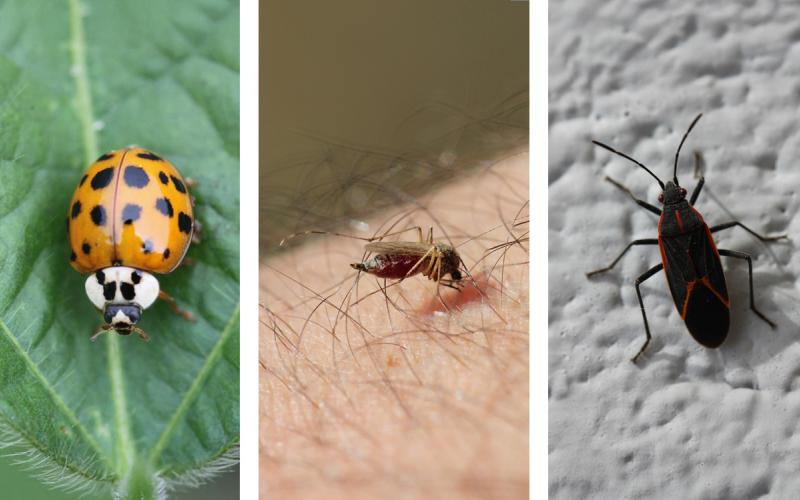Written collaboratively by Adam Varenhorst, Philip Rozeboom, Patrick Wagner, and Brad McManus.
Enough degree days have accumulated in some areas of South Dakota for common stalk borer caterpillars to start moving to corn end rows. Typically, common stalk borers only affect the first few rows of a field that are adjacent to a road-ditch or waterway. But if they are left unmanaged they can reduce stands and leave the end rows looking rough. Although it’s just the first few rows, considerable stand loss can also reduce yields.
Identification
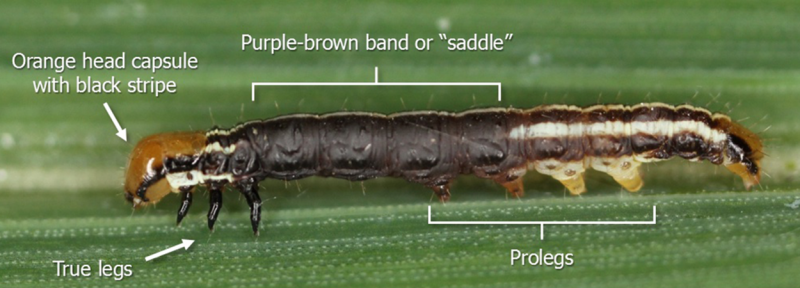
Adult common stalk borer are small, brown moths. The front wings are typically gray to brown in color with a few clusters of small white spots and span approximately 1 to 1 1/2 inches.
Common stalk borer caterpillars are distinctive and easier to identify than the adults. The caterpillars have solid orange head capsules that have a single black stripe along each side (Figure 1). Younger caterpillars have a distinctive purple-brown band, sometimes referred to as a “saddle”, behind their true legs that extends to the second pair of abdominal prolegs. The purple-brown band is distinctive during the early stages of caterpillar development, but this band fades as the caterpillars age. The latter part of the abdomen is cream in color with black stripes. Fully developed caterpillars are 1 1/2 to 2 inches in length.
Lifecycle
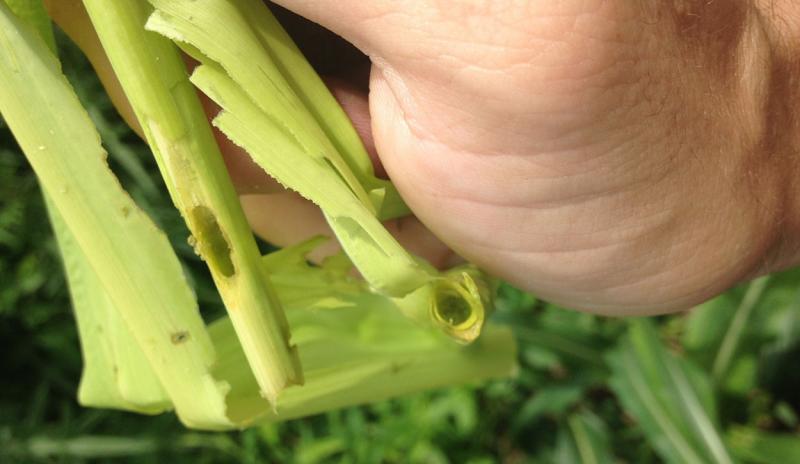
Common stalk borers have one generation per year. Adult moths emerge between August and October and are short lived. Females lay eggs predominately on dead vegetation, preferentially on narrow-leaved perennial grasses (e.g., giant foxtail, orchardgrass, winter wheat) over broad-leaved plants or annual grasses. Eggs are oviposited either within curled leaves or between the plant stem and the leaf sheath. The eggs overwinter and hatch in late spring. Common stalk borer caterpillars feed on a wide range of plant species, and newly hatched caterpillars tunnel into the first suitable host plant that they find. The caterpillars eventually outgrow smaller host plants and begin searching for larger hosts, including corn. Usually only one caterpillar is found within smaller host plants as common stalk borer caterpillars are cannibalistic; however, larger host plants can contain multiple caterpillars.
Scouting and Injury to Corn
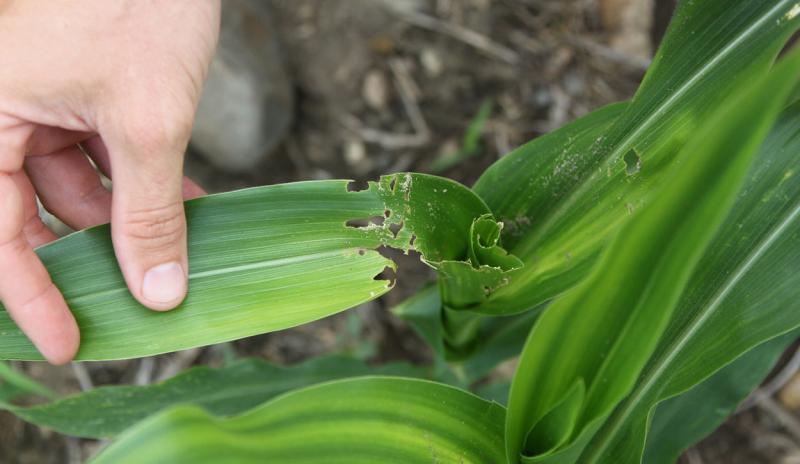
Common stalk borer caterpillars injure corn when feeding on early developmental stages (VE through V5). Infestations are typically observed in the first 4 to 8 rows that are adjacent to grassy areas. Although caterpillars feed on corn leaves, stalk tunneling is the principal cause of yield loss (Figure 2). Feeding on the corn leaves results in ragged holes that are often accompanied by a sawdust like substance around them (Figure 3). Stalk tunneling can delay corn development, resulting in deformed plants and reduced yields via poor pollination and smaller ears. If caterpillars feed on the growing point of the corn, they can cause a condition known as “dead heart”, where the corn plant will stop growing, wilt and eventually die. As corn plants develop, they are more capable of tolerating common stalk borer infestations, and the caterpillars are less likely to feed on the growing point. This is why delaying movement into the corn field is very important early in the season.
Management
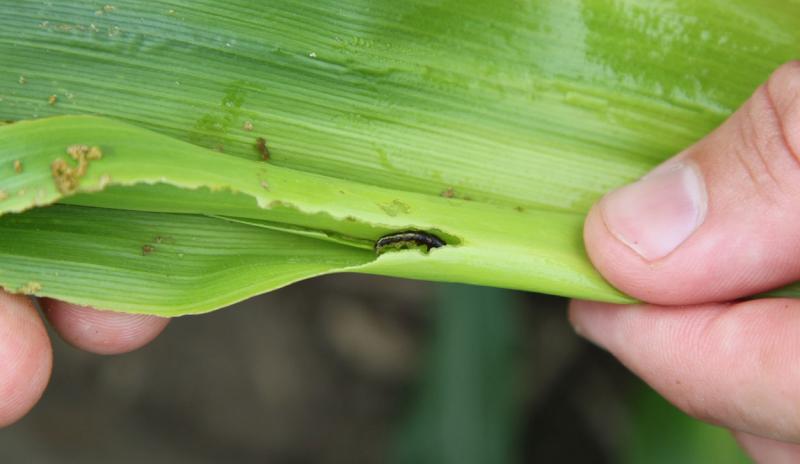
Common stalk borer caterpillars can be difficult to manage because caterpillars that tunnel into corn stalks are very well protected. Cultural control for common stalk borer includes any weed management plan that limits or eliminates grasses near field margins. Management of grasses reduces favorable egg laying sites for female common stalk borer. This management should occur in the fall or in February to March. Another management option is to plant corn early to reduce the risk of injury, as older plants are more capable of tolerating common stalk borer caterpillar feeding. Populations of common stalk borer are also reduced by burning grassy areas surrounding cornfields in late winter, when overwintering common stalk borer eggs are present on grasses. The eggs will be destroyed but the grasses can regrow the following spring.
Timely insecticide applications that target either newly hatched caterpillars or their migration from grasses to corn can effectively reduce common stalk borer populations and subsequent feeding. For a list of insecticides labeled for common stalk borer in South Dakota refer to the current South Dakota Pest Management Guide - Corn.
There are Bt corn hybrids available that produce toxins that manage common stalk borer caterpillars. However, only the Bt toxin Vip3A is labeled for control of common stalk borer. The other Bt toxins, Cry1Ab and Cry1F, are labeled for suppressing common stalk borer, indicating that infestations may still occur.


